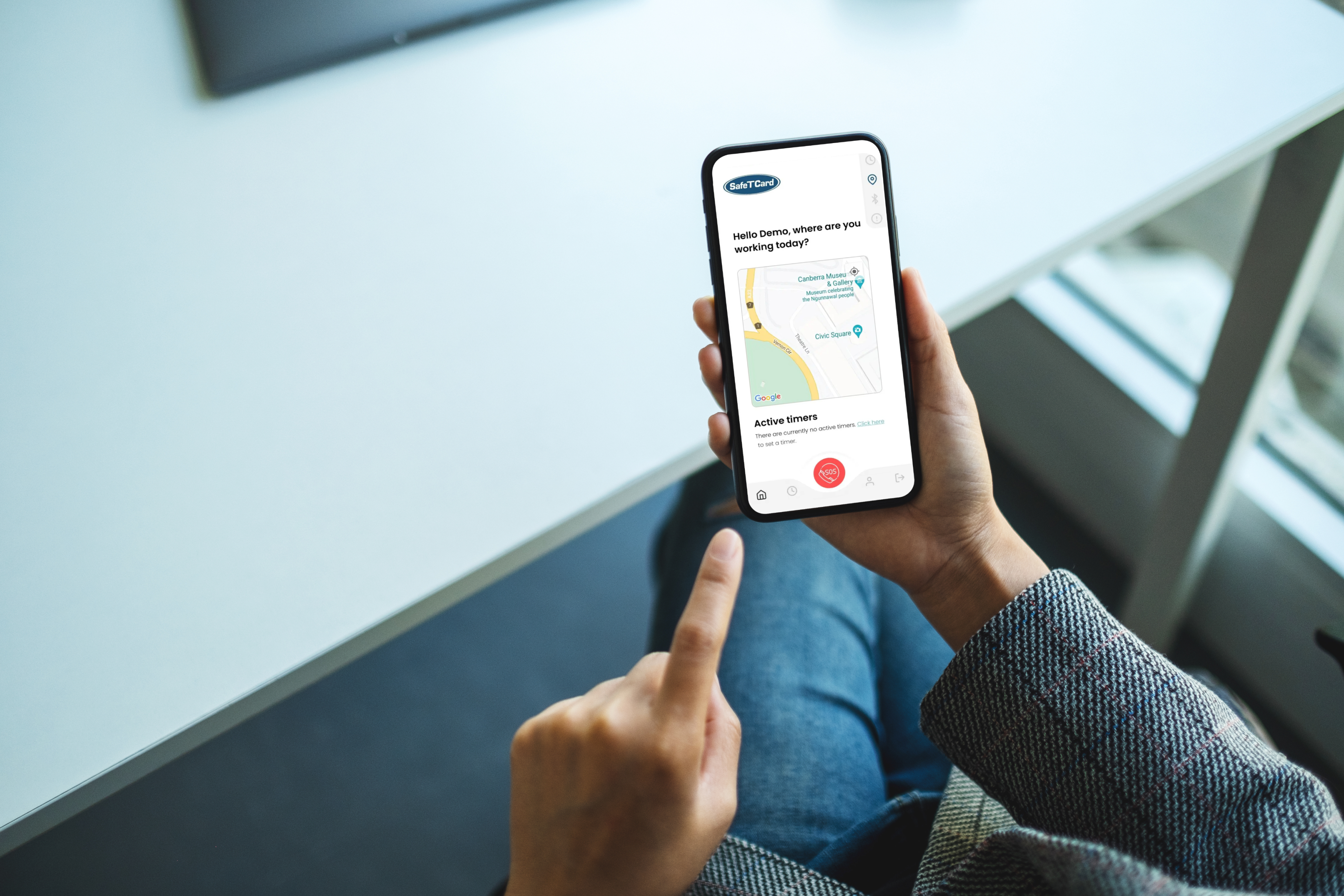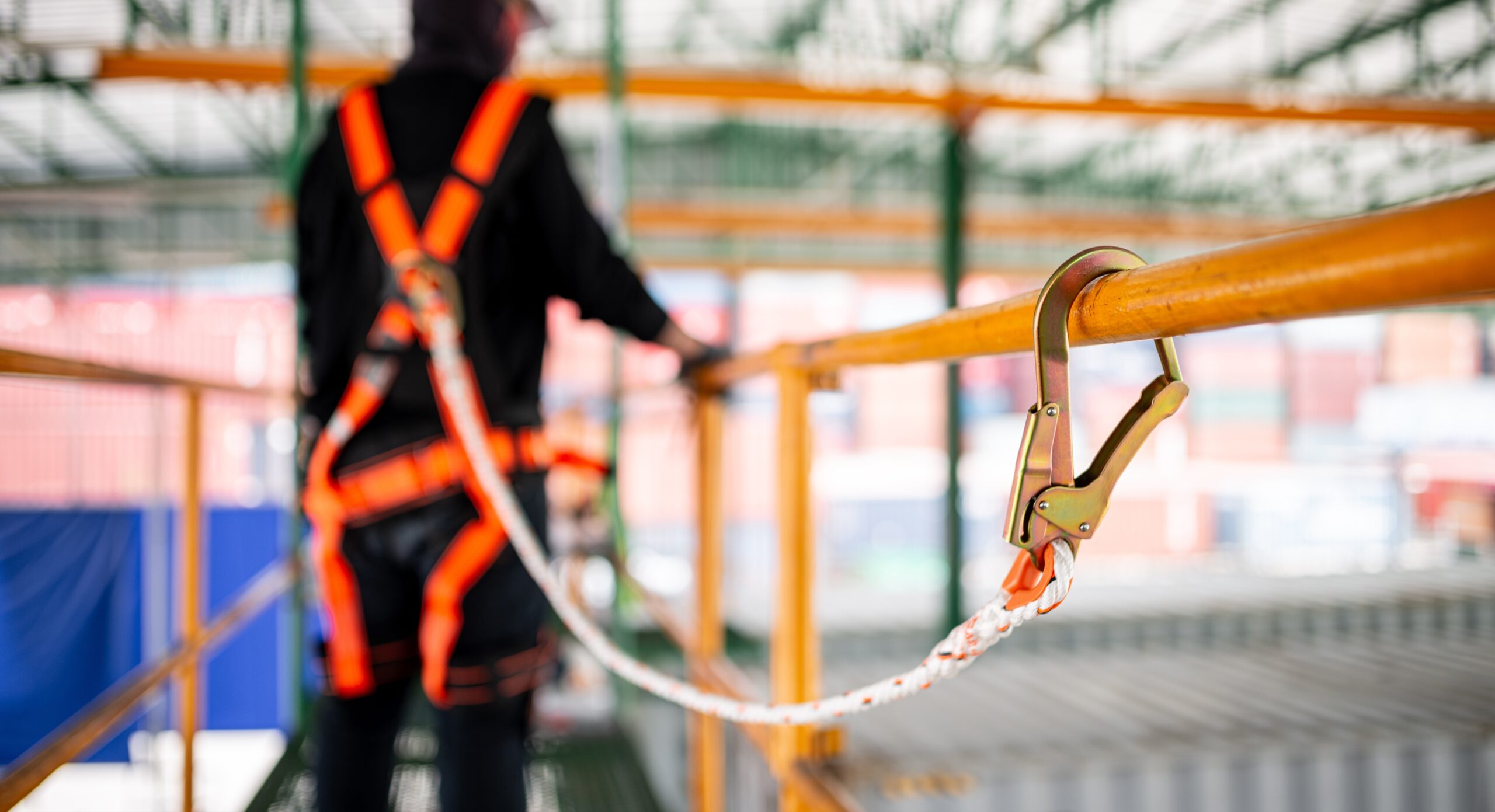In today’s increasingly uncertain world, personal safety devices have become essential tools for individuals looking to protect themselves from potential threats and control risk.
Whether you are concerned about your safety at home, during your commute, or working alone in people’s home or in remote areas, choosing the right personal safety device can give you peace of mind and a reliable way to seek help in an emergency. It can be challenging to know which device is best suited to your specific needs, with so many options available.
Understanding the different types of personal safety devices
Personal safety devices come in various forms, each designed to address specific safety concerns. The most common types include alarm sirens, man down alarms, GPS-enabled devices, wearable safety gadgets, and mobile lone worker apps. Understanding what works best for your team is crucial for ensuring quality support.
1. Alarm sirens: Simple but effective
Alarm sirens are compact devices that emit a loud, piercing sound when activated. The noise is intended to startle an attacker and attract attention, providing a deterrent in potentially dangerous situations.
These personal duress alarms are easy to carry, often in the form of keychains or pocket-sized gadgets, and can be quickly activated in an emergency.
2. GPS-enabled devices: Advanced protection for lone workers
For those who work in isolated or high-risk environments, GPS-enabled safety devices are invaluable. These devices track the user’s location in real-time and can transmit this information to a monitoring centre or emergency contacts when an alarm is triggered.
Devices like the SafeTCard ID offer features such as two-way communication, man-down alarms, and SOS buttons, making them ideal for lone workers or individuals in remote areas.
3. Wearable safety gadgets: Discreet and convenient
Wearable safety devices, such as pendants, wristbands, or ID holders, provide discreet protection that can be worn daily.
Personal safety devices like the 4G Companion often include features like GPS positioning on activation, alarm sirens, and even fall detection. They are particularly useful for individuals who want a device that is always accessible without drawing attention.
4. Mobile safety apps: Versatile and accessible
Lone worker phone apps turn your smartphone into a personal safety device. These apps typically offer features like GPS tracking, panic buttons, and emergency contact notifications. They are a convenient option for individuals who want to integrate safety features into a device they already carry. The SafeTCard Mobile App also offers a bluetooth integration for easy-activation.
Key factors to consider when choosing a personal safety device
Choosing the right personal safety device involves more than just picking the most popular option. It’s about finding a device that fits your lifestyle, meets your specific needs, and provides reliable protection when you need it most. Here are some key factors to consider:
1. Assess your personal safety needs
The first step in choosing the right personal safety device is to assess your specific safety needs. Consider the environments you frequently find yourself in and the potential risks you face. For example:
- Lone workers: If you work alone or in remote locations, a GPS-enabled man down alarm device with real-time tracking and two-way communication is essential.
- Urban commuters: If you often walk alone in urban areas, an alarm siren or wearable safety device may be more suitable for quickly attracting attention.
- Elderly individuals: For seniors, a wearable device with fall detection and easy access to emergency contacts can provide both security and peace of mind.
- Students: For young adults or students, a discreet device like a keychain alarm or a mobile safety app may be the best option, offering protection without being cumbersome.
Understanding your specific needs will help you narrow down the options and choose a device that offers the right level of protection for your situation.
Don’t forget to adhere to policies for lone worker safety.
2. Consider ease of use
In an emergency, the best safety tool is a device that you can activate quickly and easily. The best personal safety devices are intuitive and straightforward, allowing you to use them effectively even under stress. Look for devices with:
- Simple activation: Whether it’s pressing a button, pulling a pin, or tapping a screen, activating the alarm should be simple.
- Clear instructions: The device should come with clear instructions. You should practice using it regularly to ensure you can activate it comfortably.
- Accessible design: The device should be easy to carry and access. For wearable devices, consider how comfortable they are to wear and whether they fit seamlessly into your daily routine.
3. Evaluate the features
Different personal safety devices offer different features, so it’s important to evaluate which features are most important to you. Some key features to consider include:
- GPS enabled devices: Essential lone worker safety solutions for lone workers or those in remote areas, GPS positioning on activation allows emergency responders to locate you quickly.
- Two-way communication: Devices with two-way communication enable you to speak directly with a monitoring centre or emergency response contacts, providing crucial information during an emergency.
- Alarm siren: A loud alarm can deter attackers and alert others to your situation.
- Fall detection: Particularly useful for the elderly or those with medical conditions, fall detection automatically triggers an alert if the device detects a sudden drop.
- SOS button: An easy-to-access SOS button allows you to call for help instantly.
Consider which features align with your specific needs and look for a duress alarm system that offers a good balance of functionality and ease of use.
4. Portability and discreetness
The portability and discreetness of a personal safety device are critical factors, especially if you plan to carry it with you at all times. A device that is too bulky or conspicuous may be left behind or may draw unwanted attention. Here’s what to consider:
- Size and weight: Choose a safety alarm that is lightweight and compact, making it easy to carry in a pocket, purse, or bag.
- Wearability: If you prefer a wearable device, ensure that it is comfortable to wear and doesn’t interfere with your daily activities.
- Design: Consider how discreet the personal safety device is. Some personal safety alarms are designed to look like everyday items, such as keychains or jewellery, allowing you to carry them without drawing attention.
5. Battery life and reliability
In an emergency, your personal safety device needs to be reliable. Battery life is a crucial consideration, especially for devices with GPS tracking or communication features. Look for devices that offer:
- Long battery life: Ensure the device has a long-lasting battery, particularly if you’ll be using it in remote areas or over extended periods.
- Low battery alerts: Some devices come with low battery alerts, reminding you to recharge or replace the battery before it runs out.
- Durability: The device should be durable enough to withstand everyday use, and if you work in harsh environments, it should be resistant to water, dust, and impact.
6. Cost and budget considerations
Personal safety devices are available at various price points, from affordable alarm sirens to more expensive GPS-enabled devices with advanced features. While it’s important to invest in a quality product, you should also consider your budget. Here’s what to keep in mind:
- Value for money: Look for devices that offer the best value for your budget, balancing cost with the features and reliability you need.
- Ongoing costs: Some devices, particularly those with GPS tracking upon activation and monitoring services, may have ongoing subscription fees. Make sure you factor these into your budget.
Top personal safety devices to consider
Now that you have a better understanding of what to look for, here are some top personal safety devices that cater to different needs:
1. SafeTCard ID: Ideal for lone workers in healthcare, government, or social services. This GPS-enabled device offers real-time tracking, two-way communication, and an SOS button. It’s discreet, easy to use, and provides 24/7 monitoring.
2. SafeTCard 4G Companion: The reliable, budget-friendly, waterproof safety alarm. Offering GPS technology, SOS alerts, fall-detection, and two-way communications, it is easy to use in any scenario.
3. ACR Bivy Stick: This life-saving communicator has various wearable applications. Offering satellite GPS monitoring and communications, it is ideal for those working beyond mobile service boundaries.
4. SafeTCard Mobile App: This versatile app turns your smartphone into a personal safety device. The app offers GPS tracking, panic button functionality, and instant notifications to emergency contacts.
Making the right choice
Choosing the right personal safety device is a crucial step in ensuring your security and peace of mind. By considering your specific needs, evaluating the features and usability of different devices, and thinking about portability, reliability, and cost, you can select a device that fits seamlessly into your life and provides reliable protection when you need it most.
With the right personal safety device, you can navigate your daily life with greater confidence and security.
Find out more: Ensuring Compliant Lone Worker Safety in Queensland




